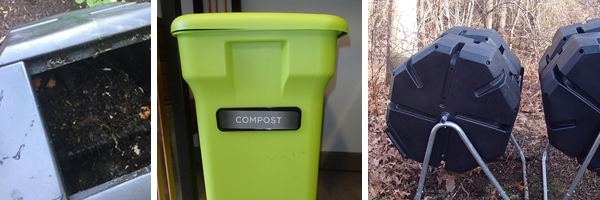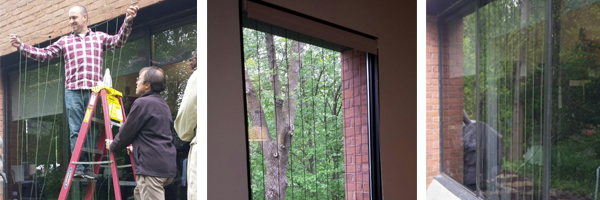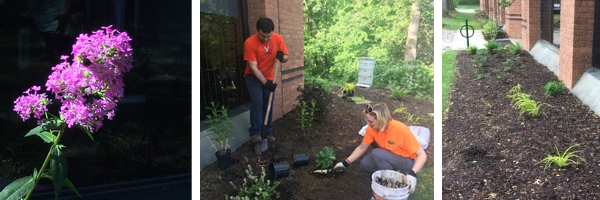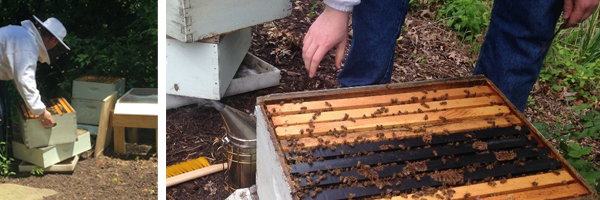At Straughan Environmental, our Green Team is working on initiatives to use our own office space to promote a healthier planet. Most of what we do can be implemented in homes, but have a larger impact when used in an office space. For example, composting becomes more achievable when more people combine their organic waste, and HVAC modifications can make a larger impact when applied in larger buildings.
Our Green Team leads these efforts, meeting regularly to discuss improvements and explore new ideas to implement in the future. We have plans to start new initiatives shortly, such as calculating and reducing our combined carbon footprint using calculations from our vehicles and building energy usage.
Here are a few things we are working on currently:

Composting: One of our Green Team’s objectives is to generate 30 gallons of compost per year. We encourage everyone in the office to dispose their food scraps into the compost, and we now have 4 active compost bins totaling 7 gallons of organic material in the process of decomposition. Our aim is to incorporate the nutrient-rich compost back into our garden’s soil to encourage healthy conditions for our pollinator plants.

Bird Strike Prevention:
Up to a billion birds die each year in the United States from hitting glass windows, walls, and other structures, making this threat one of the costliest to bird populations (American Bird Conservancy, abcbirds.org, 2017).
The Straughan office has large windows and is situated near a wooded ravine that supports notable bird life. However, we have noticed on occasion that birds fly into these windows, unable to distinguish the glass from the reflection of the trees or perhaps perceiving a path from one window through to another. In response, the Straughan Green Team initiated a bird protection program to reduce the number of avian window strikes. We have begun installing “bird savers,” which are comprised of thin parachute cords that hang the length of the window at a spacing of about 4 inches. This spacing provides sufficient visual cues to birds to avoid collision with the glass.

Pollinator Garden: This May, Straughan’s Green Team planted a pollinator garden! Our garden incorporates native plant species, such as Mistflower, Black Eyed Susan, and Swamp Milkweed. Studies indicate that pollinator diversity and abundance is declining, so our goal is to promote the growth of species of pollinators like bees, butterflies and beetles. These pollinators are essential for our ecosystems, food, and natural resources. In our garden, we also utilize the compost harvested from our composting initiative, located next to our bee hive. As our garden grows and flourishes we look forward to seeing more plants and pollinators!
Our garden includes the following species:
- Jeanna Summer Phlox
- Autumn Joy Sedum
- Diablo Physocarpus (Ninebark)
- Swamp Milkweed
- Old Fashioned Bleeding Heart
- Running Tapestry Foamflower
- Eupatorium coelestinum, mistflower (now Conoclinium coelestinum)
- Rudbekia hirta, black-eyed Susan
- Actaea racemose, black cohosh
For more information, check out the resources provided by The USDA Forest Service, The USDA Natural Resources Conservation Service, and University of Maryland.
HVAC/Thermal Comfort: In order to understand temperature patterns within the office, Straughan’s Green Team collected responses from employees in the Columbia office about their thermal comfort throughout the year. The effort focused on identifying trends of temperature and air flow that may indicate areas where HVAC settings can be adjusted or changes implemented, ultimately making the environment more comfortable for staff and potentially leading to increased HVAC efficiency.

Bees: Straughan has been keeping bees since 2012. Like many Maryland beekeepers, we have had trouble keeping our colonies thriving from one year to the next. Varroa mites, which are a parasite often implicated with pesticides as one of the likely causes of colony collapse disorder, have required persistent treatment to keep them under control. They caused the demise of our previous colony, in the winter of 2016. Our current colony, which started as a nucleus hive in the spring of 2016, is thriving. The colony occupies three hive bodies, and although the bees have not produced enough honey for harvest, they have stored a significant amount of honey for their own stores this winter.
